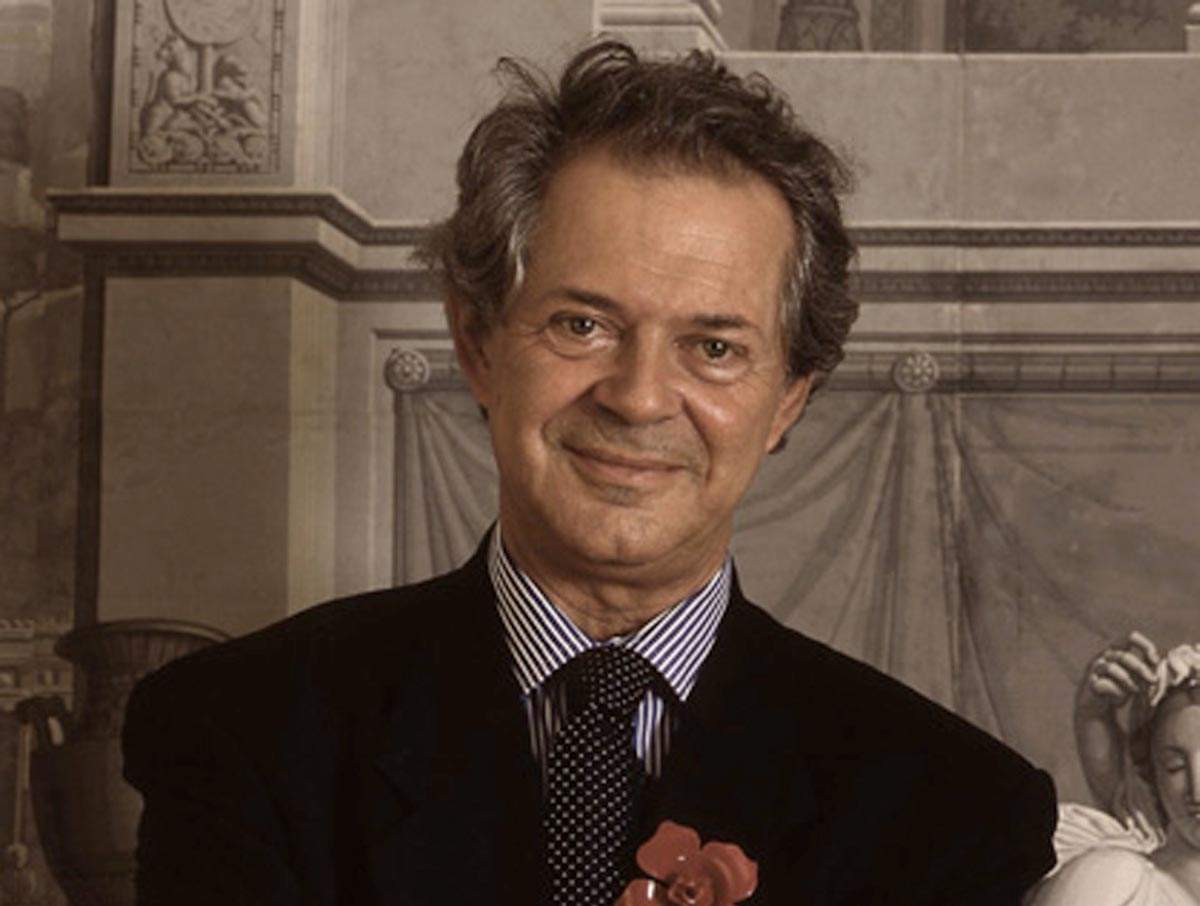Publisher and collector Franco Maria Ricci, founder of the eponymous publishing house and the art magazine FMR, one of the most valuable art publications of recent decades, has died in Fontanellato (Parma) at the age of 82.
Born in Parma in 1937, of noble birth, to a family of Genoese origin, he had studied as a geologist and graduated from the University of Parma in this subject, but he soon abandoned his initial profession (he had worked in Turkey for an oil company) to devote himself completely to his artistic activity, both as an artist himself (he began as an advertising graphic designer: He signed campaigns for Alitalia, SCIC kitchens, Kalos watches, and designed numerous logos) and as an editor. As a graphic designer he designed logos, sketches, and posters, and as a publisher he founded, in 1965, the publishing house of the same name, specializing in fine art publications and anastatic reprints of old books, including the Manuale tipografico by Giambattista Bodoni (Saluzzo, 1740 - Parma, 1813): the great Piedmontese-born engraver and printer was always a great passion of Ricci, who for the lettering of Franco Maria Ricci’s books was inspired precisely by Bodoni’s volumes. Instead, the founding of the well-known magazine FMR dates back to 1982, characterized by fascicles with long monographic articles on ancient art, written by leading scholars: Ricci was its editor from its inception until 2004, the year publications ceased.
As a collector, he had amassed an extraordinary collection, especially of ancient and modern art (with works by artists such as Luca Cambiaso, Jacopo Ligozzi, Francesco Hayez, Bartolomeo Schedoni, Filippo Mazzola, Giovanni Battista Foggini, Massimo Stanzione, Valentin de Boulogne, and Jean-Étienne Liotard) and twentieth-century art (works by Adolfo Wildt, Antonio Ligabue, Alberto Savinio, and others stand out): most of the works had been gathered in the Labyrinth of the Masone, built starting in 2005 (commissioned by architect Pier Carlo Bontempi) in the Fontanellato countryside. The Labyrinth (the largest in the world: it consists of 200,000 bamboo canes) opened to the public in 2015, and is to be regarded as the summa of Franco Maria Ricci’s activities: in addition to the collection, the Labyrinth museum houses the publishing house’s publications, magazine archives, and holds important exhibitions.
“The passing of Franco Maria Ricci,” comments Cultural Heritage Minister Dario Franceschini, “is a great sorrow. With him passes away an intellectual of extraordinary sensitivity and intelligence, a cultured and refined publisher, a man who always worked to disseminate knowledge of our cultural heritage.”
Pictured is a photograph of Franco Maria Ricci in the 1980s.
 |
| Farewell to publisher and collector Franco Maria Ricci |
Warning: the translation into English of the original Italian article was created using automatic tools. We undertake to review all articles, but we do not guarantee the total absence of inaccuracies in the translation due to the program. You can find the original by clicking on the ITA button. If you find any mistake,please contact us.